How to Choose the Right Tech Partner for Custom SaaS Development
Published: June 30, 2022
13 min read
In this article, you'll learn:
1
💼 Outsourcing vs In-House SaaS Software Development
2
💭 Changing your Development Team: Tips & Tricks
3
👨💻 CTO Outsourcing
4
❓ What to Look for in your SaaS Development Tech Partner?
5
🤝 Cooperation with Stormotion: From the First Call to Partnership
6
💡 Takeaways
When developing a SaaS platform of your own, choosing the right Tech Partner might be quite an issue: How do you know they’re a good match to deliver your MVP? How to prevent intellectual property issues? How do you know that they have sufficient technical knowledge? Are they setting a fair price? These and many more concerns may come up.
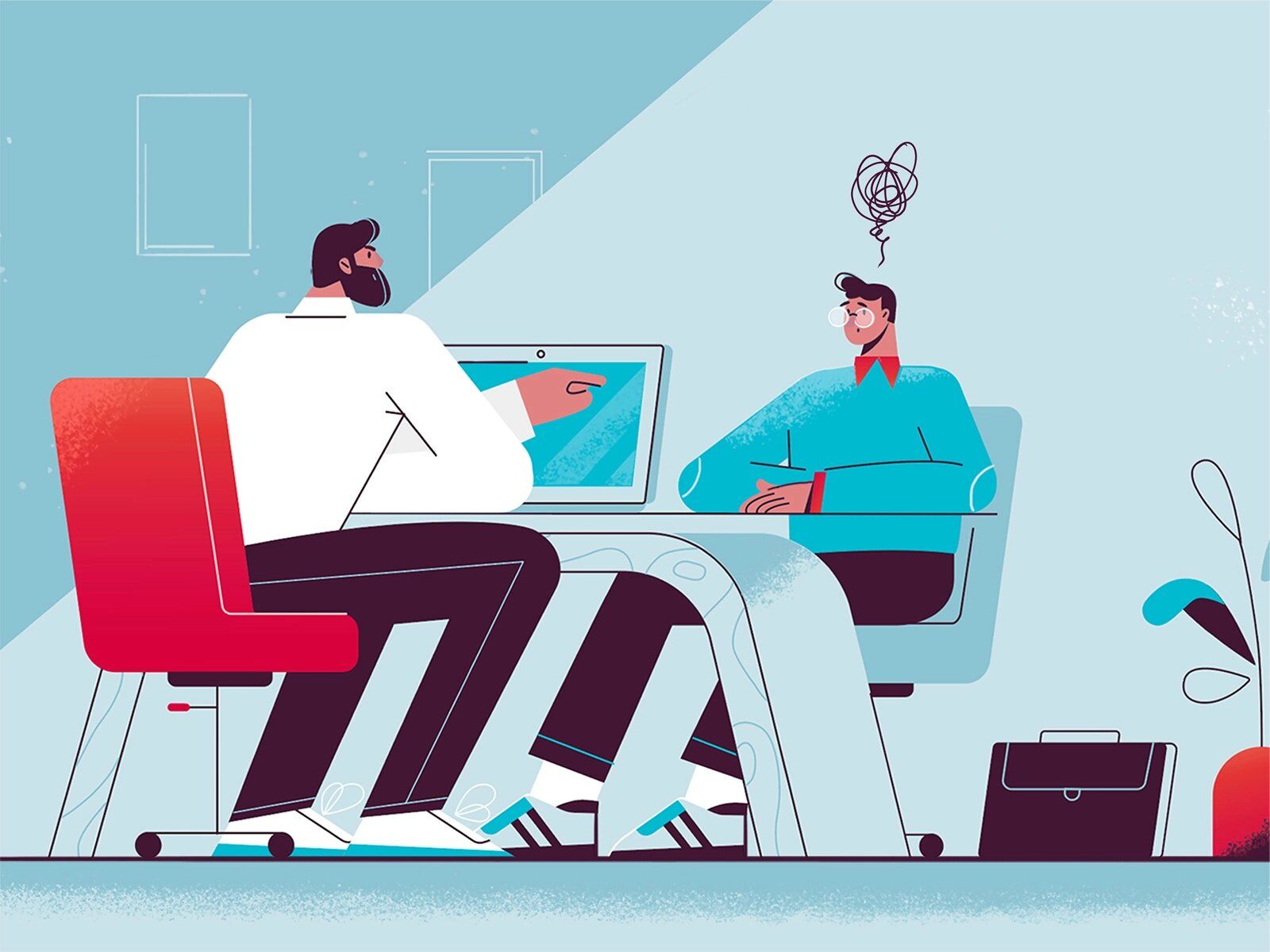
If you’d like to get tips on how to hire remote software developers for SaaS platform development, read on! (image by Anastasia Golub)
Moreover, with the globalized highly-dynamic IT market, the number of potential Tech Partners is over the top, namely 26.9M developers to choose from. You can choose a team from anywhere in the world to build your cloud-based SaaS application, so don’t get discouraged! Finding the right one may be fairly complicated, as well as time-consuming.
To help you navigate through this challenging hiring process, we’ve created this guide where we’ve covered some of the most FAQs on building SaaS products, given a lot of insights on partnering with development companies, and shared some details of how we hold our partnership discussions.
💼 Outsourcing vs In-House SaaS Software Development
To begin with, we’d like to talk about how outsourcing SaaS development differs from hiring an in-house team in terms of what advantages and disadvantages each option has, and in what cases you might prefer one of the development options to another.
In-House SaaS Platform Development
Hiring a development team to build a SaaS app for your company specifically has quite a lot of benefits, as well as drawbacks. Let’s take a look at them first.
Pros
- A higher level of dedication
- A deeper understanding of company’s needs and values
- Easier communication
- More opportunities for monitoring the development process
- Easier quality assurance control
- No access to the project from the outside and, thus, higher level of data safety
Cons
- Continuous retraining
- Little outside-of-the-company experience and limited skills
- High fixed costs, which implies having to pay the team even if they’re not actually working on the development
- Time-consuming and pricey hiring process
- Increasing resignation rate and risk of losing experienced workers
- Slower Time-to-Market
- Contract liabilities and, thus, less flexibility
Generally, building an in-house team to build a SaaS application is beneficial in terms of communication, level of control, and dedication. However, the downsides like high fixed costs (salary, office maintenance, probably one-time costs for supplying the necessary equipment) and limited skill sets are pretty significant as well.
Outsourcing SaaS Solutions Development
On the other hand, looking for a temporary Tech Partner to build such cloud-based software can also be highly beneficial but has certain risks to it. One of the main advantages is significant cost reduction — 70% of companies say that this advantage is the main reason they choose SaaS development outsourcing.
However, it surely isn't the only aspect you should take into account when outsourcing your SaaS project:
Pros
- Splitting the failure risks
- Flexible contracts
- Wide range of expertise
- Lower management and HR costs since you only pay for the amount of hours spent on your project
- Quick Time-to-Market
- Experience in structuring the development process as well as widely experienced PMs
Cons
- Higher risks connected with intellectual property access
- Lower company dedication level
- Less monitoring opportunities
- Potential time zone and culture differences
- Communication challenges
The greatest advantages of SaaS development outsourcing include lower costs (especially, in the long run), widely experienced developers, and flexibility in terms of contracts. However, thinking out your contracts to make sure that you get the code rights and structuring your communications so you’re aware of everything that's going on with your project is a must.
Outsourcing vs In-House Development: Use Cases
We definitely haven’t mentioned every single benefit and downside of either SaaS development option; the list goes on due to dozens of other aspects like additional accounting costs for in-house development and post-development application maintenance cost when outsourcing the project.
Additionally, these are the general aspects that are applicable to pretty much most of the use cases but surely, your specific case might be somewhat different and require a deeper analysis to make sure that one option is more suitable than the other.
What can also happen is that neither of the options will indeed be the better one, in which case it can be a matter of cost optimization or your personal preferences.

SaaS product development services can be either provided by an outsourced SaaS development team or by your own team, preferably experienced in the SaaS industry (image by Outcrowd)
However, there are definitely certain use cases when outsourcing will most likely be more beneficial than in–house development, and vice versa. Let’s take a look.
Outsourcing | In-House Development |
|---|---|
Your priority is high quality with minimal costs | Your priority is an opportunity to constantly monitor the development process |
Time-to-Market plays an important role to you | You need everyday streamlined communication with the development team (which isn’t a problem when outsourcing, but is definitely easier with an in-house team) |
You want to save time on having to create a whole team of professionals from scratch and building communication channels for them | You would like to have a development team on board for everyday tech tasks. However, you might not need some of the specialists you hired for the development after finishing the product. Or you might need workers with other specializations as well |
You want to make sure that every step of the development will be handled by a specialist with a required skill set |
From our experience, most companies that don’t need developers every single day tend to outsource their SaaS-development-related tasks so as to have a cost-efficient partnership with the development team and spend the development budget on development-related tasks and onboarding only.
However, if you’re sure that you’ll need to cooperate with the developers most of the time over the next several years, for most of the tasks, and you have time to find decent specialists, building your own team might be reasonable.
And last but not least, there isn’t one correct way to solve a problem. Development is a complex process that requires a lot of patience and expertise. So, take your time to talk to your potential Tech Partners or in-house developers, think strategically, and don’t stop looking when you find the first suitable option. Even if it might seem almost perfect, there are definitely ways to make it more efficient and effective.
/
/
💭 Changing your Development Team: Tips & Tricks
Another important aspect when outsourcing your SaaS development is being able to switch your Tech Partner in case such a need occurs. Reasons can be really different — from dissatisfaction with the product’s quality to communication problems. It’s also possible that you might want to update the product built by the previous team. However, no matter what reason leads you to such a decision, there are quite a lot of things to take into account.
We at Stormotion had some projects that we took over from other development companies. So, in this section, we’ll try to walk you through some of the most important steps and share some hands-on information.
# 1: Repository & Code
One of the most important things to take care of is the contract you sign with your chosen development team. You have to remain the owner of the code under any circumstances. This is essential since in case you want to change development teams for whatever reason, the new one will need the repository to take over the development.
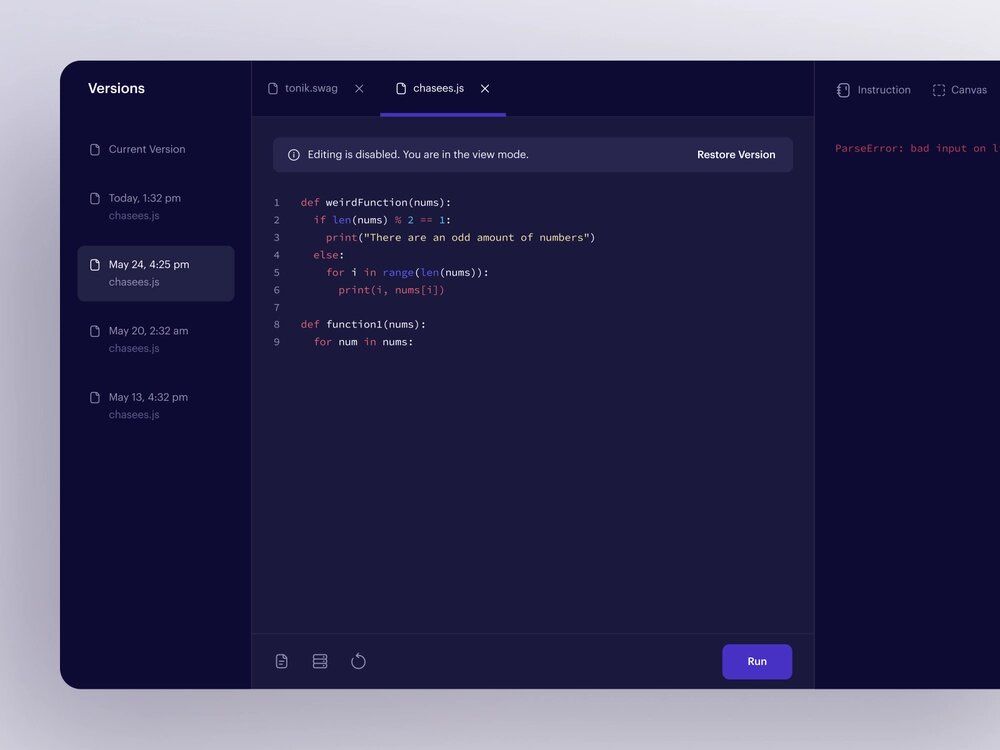
When switching your SaaS software development team, make sure that you document all business processes so you can pass them onto your new team (image by Karol Dera)
To avoid such issues, it’s important to:
- have a detailed partnership contract;
- respect each other no matter what and build up streamlined communication channels to address any issues;
- choose your Tech Partners wisely and ask for references.
In case you didn’t pay attention to this aspect and you’re currently having problems with getting access to the repository, feel free to talk about it to your new (potential) Tech Partners.
Otherwise, the new development team will have to work on the project from scratch, which will surely increase your expenses, as well as the development time.
Even though most contracts include the client being the owner of the code, it’s best to double check when signing yours.
# 2: Documentation & Onboarding
Another important matter to take care of is technical and business documentation. The technical part may include:
- A description of the project.
- The design documents.
- The coding standards.
- The testing standards & tasks.
- End-user documentation.
- Instructions for maintenance, installation, and usage, etc.
As for the business part, that may include your budgeting plans, ownership rights, crowdfunding documents, etc.
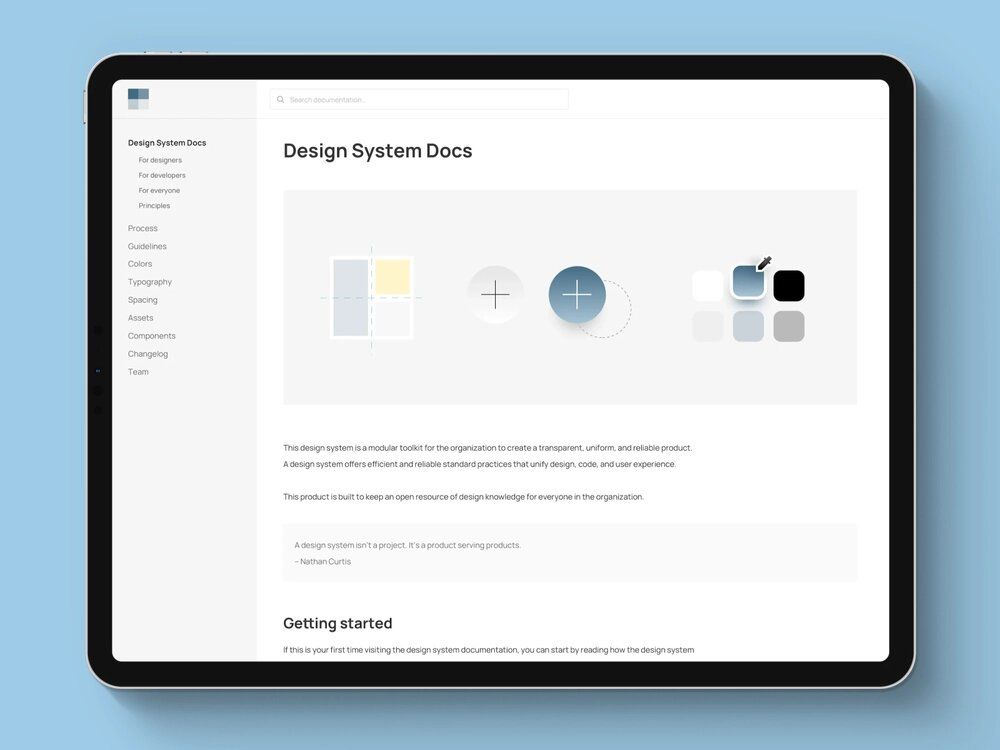
Building Software-as-a-Service by two different third-party software developers might be challenging in terms of understanding the “halfway-done” project but a detailed documentation of each development stage can help (image by Ramsés Cabello)
Long story short, all documentation should be well-structured and include every piece of information that’s related to the project. It’ll help your new Tech Partners understand the previous development process better, start the actual development much faster, and provide you with better results.
What might also happen is that the new company offers you to implement significant changes or start the project anew. That could be due to poorly written code that will cause more problems if left unchanged or a lack of information to continue that development from where it stopped.
It’s quite a common practice so we’d recommend taking your Tech Partner’s advice into account. Just make sure that their argumentation is credible and makes sense to you as a business owner as well.
# 3: Address the Problem
Last but not least, we wouldn’t recommend hiding the reason why you’re looking for a new tech partner from the potential new ones. On the contrary, it’s better to tell the whole truth so that they can get a better understanding of what it is you’re looking for. It can also help them avoid making the same mistakes.

In case you had any problems during SaaS application development with your previous Tech Partner, feel free to address it to get a more pleasant app development experience (image by Kit8)
All in all, it’s generally best to take a possible development team change into account from the very beginning so as not to trap yourself into a “no-win” position. So, even if you won’t have to change the Tech Partner, you’ll be fully prepared to make this process as painless and smooth as possible just in case.
However, to know how to do it all, it’s important to have an “insider” with technical knowledge on your team. That person could be a Chief Technical Officer who can talk you through all the technical peculiarities with potential partners and be your trusted person.
Taking over SaaS App Development: Our Expertise
We at Stormotion have taken over some projects that were started by other teams to complete the development. Generally, there are three options here: a complete rewriting of the code, a refactoring (occasional improvement), or a combination of these two methods.
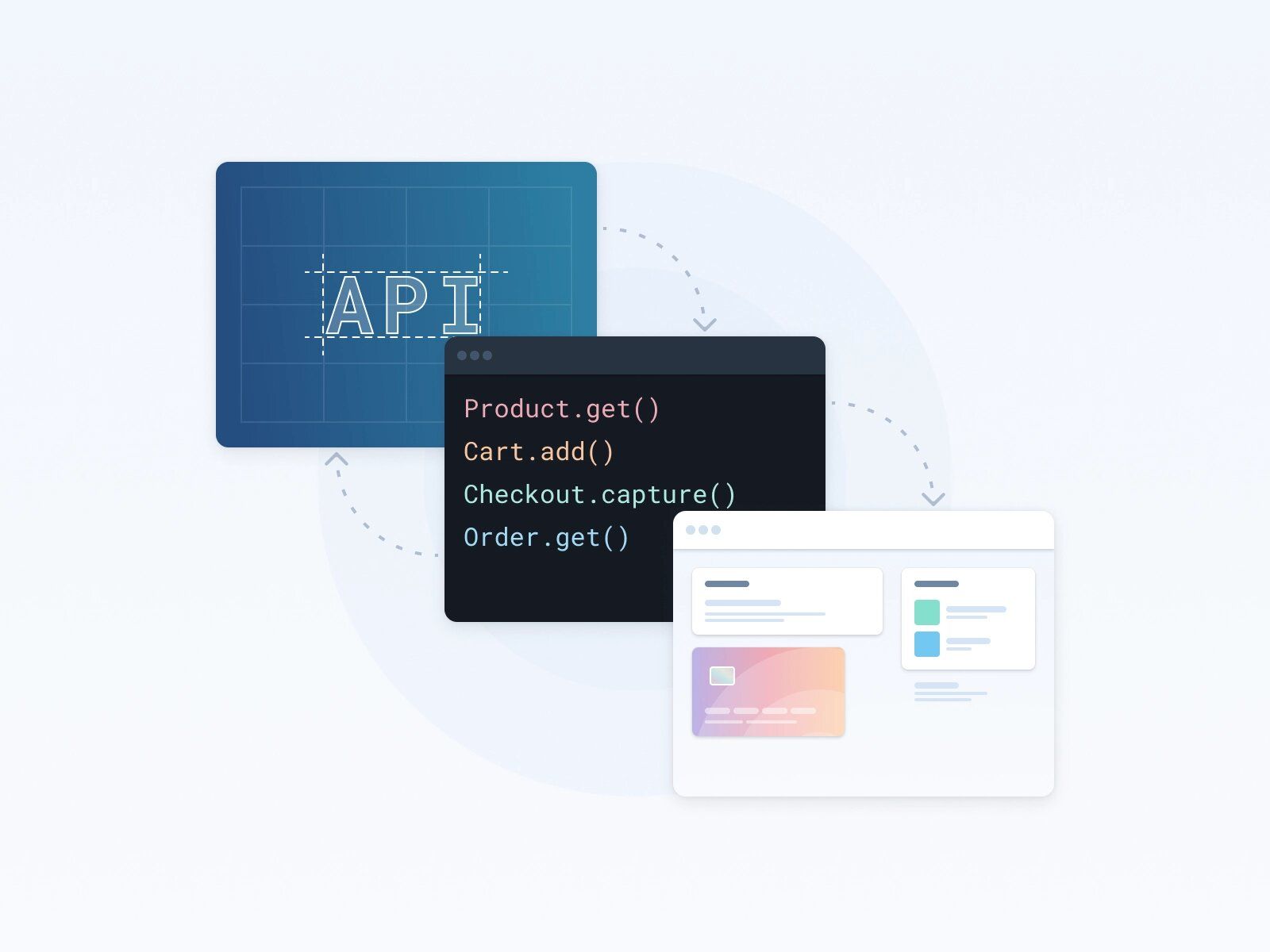
As an experienced Tech Partner in SaaS software development, we’ve taken over several SaaS applications to finish up as well as to rewrite, and we’ll happily share this expertise with you! (image by blaze)
One of the products we took over had some problems with the library versions that the previous team used to set up CI/CD (Continuous Integration/Continuous Delivery) tools. Namely, the platform administrators announced that these library versions wouldn’t be supported for a long time. This is why the team should’ve updated the libraries on time.
Unfortunately, they overlooked and deployed the code without updating the library versions. The consequence was that we weren’t able to update the application. After local improvements didn’t help, we realized that the platform simply stopped supporting these versions at all. In the end, we had to completely rewrite the CI/CD processes.
If you’re interested in reading a bit more about this and some other similar cases, we have them written in our article on handling technical debt:
👨💻 CTO Outsourcing
In case you are a CTO or have enough technical knowledge not to need one, it’s probably not going to be a useful section to you. But you’re surely welcome to take a look at it as well!
Great ideas need great technical support. You may have a perfect vision of your SaaS product, deeply understand the pain points of your target audience and have a solid business plan. Nevertheless, your idea still needs flawless technical implementation.
Interim CTO outsourcing may help you at different stages of your product development. At the initial stage, such an expert can help you pick the best tech stack for the project. Also, they can help pick the right team regardless of whether you choose to work with remote developers or gather in-house professionals. Finally, they can also guide the development and set up a stable Software Development Lifecycle for your project.
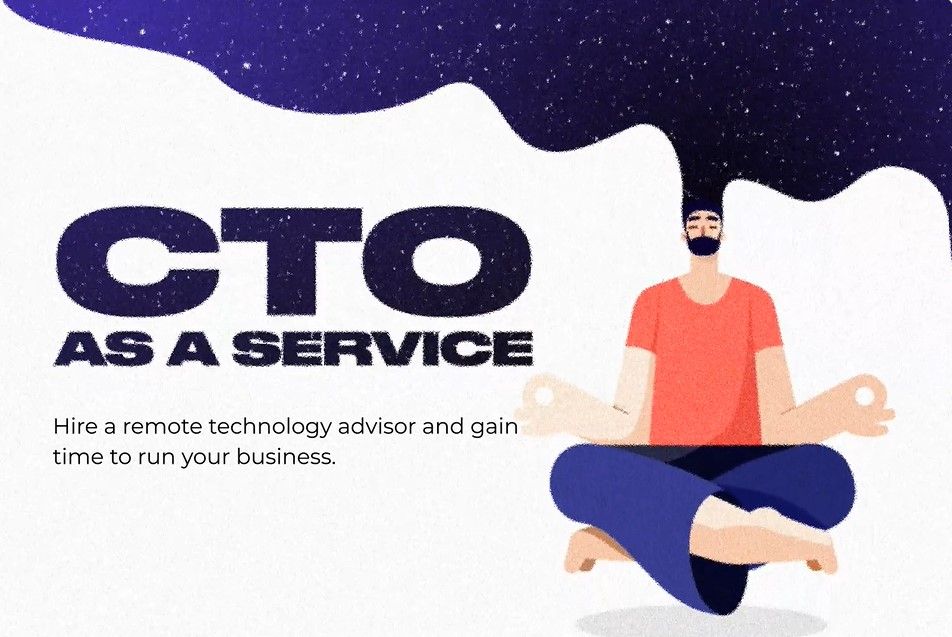
To outsource a CTO for SaaS application development, you can use multiple sources for the search and find a perfect candidate to develop a SaaS (cloud) platform (image by Maria)
More specifically, outsourcing a CTO can be beneficial in many ways:
They can pick all the necessary tech tools for your SaaS Application and make sure that the ones your Tech Partner suggests are actually efficient. | CTOs have more knowledge to explain your needs and backend details to tech specialists. |
You’ll have time to focus on the business parts like customer acquisition, budgeting, etc. | CTOs can help you set up the workflow and communication with the development team in a more effective way. |
To successfully outsource the CTO position for your SaaS development, you should take the following steps:
- Think about the responsibilities you’d like your CTO to take over.
- Define the sources where you’ll look for them. That can be Linkedin, CTO-as-a-Service companies, your personal industry connections, or a trusted development agency.
- Make a list of candidates and think about the questions you’ll want to ask them. Here are a couple of examples: Have you ever delivered similar Projects?, How can your experience be useful to our Startup?, What are your honest expectations from working at the company?
- Set up streamlined and trustworthy communication. As for digital sources, you can use Slack, Skype, Trello, Notion, Hangouts, or any other Software of your choice. Just make sure it’s something that’s accessible from any device and preferably free.
In case you feel like it’s something you might benefit from but still need more information on the topic, we have an article dedicated to CTO Outsourcing:
❓ What to Look for in your SaaS Development Tech Partner?
Once you start looking for SaaS development companies, you might wonder what it is that you should really be looking for. And the answer is pretty simple — look for whatever you feel like you want your Tech Partner to be!
However, this statement is only fair when it comes to personal traits of character. From the technical point of view, there are certain pillars of an experienced SaaS development company that is suitable for your particular use case:
Pillar | Description | |||
|---|---|---|---|---|
Tech Stack | Most companies have programming languages and APIs that they’re most experienced at. So, in case you already know what framework you’d like to use for your app, make sure to check that your Tech Partner is a professional in it. | |||
Industry-related experience | There are numerous markets that a SaaS Platform can be developed for — legal, health, e-commerce, communication, manufacturing, customer relationship, and many others. It makes sense to choose a company that’s experienced in the field you’re operating in. However, it’s not a crucial pillar. | |||
Flexible contracts | The contract you’re signing shouldn’t imply long-term partnership without an opportunity to change the terms, pick up a new Tech Stack, or terminate the contract. | |||
Full-cycle development team | Apart from the development itself, the project needs to be coordinated, tested for quality, launched, etc. Therefore, teams need other specialists as well. So, make sure that your Tech Partner has such positions as Project Manager, QA tester. DevOps engineer, etc. on board, knows third-party specialists that they can refer you to, or is ready to take over the outsourcing. | |||
Fair Payment | Keep in mind that the fees strongly depend on the region your potential Tech Partner operates in. So, what you can do here is research the average costs for the development of a SaaS solution you’re looking for, compare hourly fees of developers from different regions, maybe have some meetings with other development agencies and ask them for their price list. Your ideal candidate should be someone who values their effort and doesn’t charge you ridiculously little but at the same time doesn’t go far beyond the market average with their fees. | |||
References & Feedback | SaaS development agencies normally post client feedback on their websites. Nevertheless, feel free to contact the companies mentioned in the feedback directly — most of them would be glad to share their experience with a chosen Tech Partner. | |||

What SaaS development framework a company is experienced at is important to find the right Tech Partner for your SaaS application (image by Kit8)
However, there are also certain signs that can show you that it might be best not to partner with the company. Here are the red flags for potential fraud:
- The company refuses to leave intellectual property rights to you or maybe even doesn't want to sign a contract.
- They charge you way below average (for the specific region).
- They don’t provide you with references.
- They immediately agree to take the project without carefully investigating your needs.
🤝 Cooperation with Stormotion: From the First Call to Partnership
When discussing a potential partnership, there’s no unified guide since every single case is unique. So, to help you better understand what partnering with a SaaS development agency might look like or maybe show it from another perspective, we’d like to share with you how we communicate with our potential clients from the very first call.

In this section, we’ll share our experience of negotiating with potential clients on building SaaS platforms for them (image by 👑 UIGO Design)
# 1: The Initial Call
This step implies getting to the client’s business goal, their challenges, expectations, the desired SaaS model, and what generally led them to us. This is also an opportunity to find out about any specific requirements like API integrations, IoT/BLE devices, Machine Learning tools, etc.
At this point in time, we think about what initial solution we can offer (and if we can offer one at all). What we do for that matter is go through every aspect of SaaS application development that might be important for the client at the moment — should it be a complete rewriting of an existing product, a new product, mobile or SaaS web application, a native or a cross-platform, do they need an MVP, what will the SaaS architecture look like?
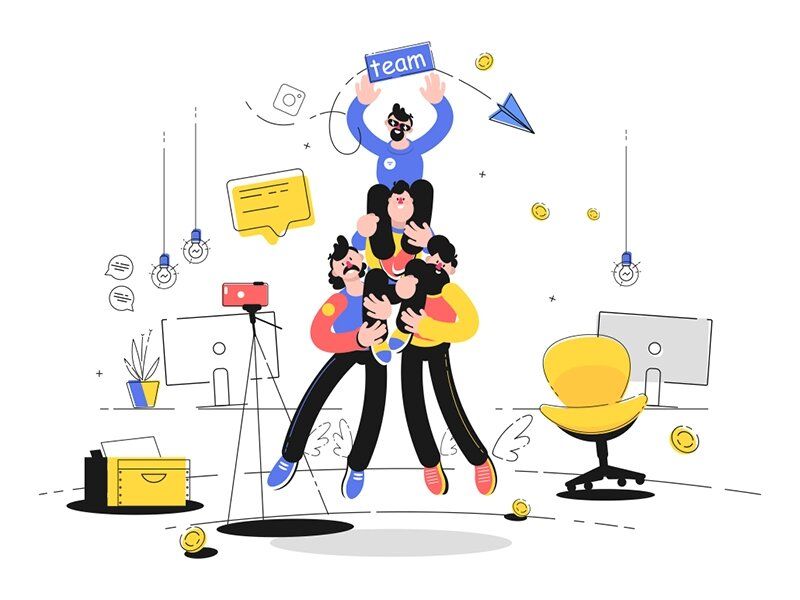
On the first call, we discuss the client’s needs in terms of their SaaS platform, their SaaS business model, rough development costs, preferences on mobile or web app, etc. (image by Anton Fritsler (kit8))
As for the client, they often ask about our experience with previous clients, industry-related experience, our expertise in specific frameworks, our cost estimate (which is rough at this stage though), and the understanding of whether we’d like to work on the project in the first place.
Your potential Tech Partner might also ask you about your resources for funding the SaaS product development (i.e. investors, crowdfunding campaigns, governmental grants, etc.).
# 2: Estimate & Further Research
Next, clients normally ask us for a more accurate answer to “How much will the development cost?” and a more accurate time estimation to get a better picture of how they can manage their available resources. We, then, try to adjust the development to the client’s needs by offering solutions that can help reduce the costs of the development and the time needed for it.
At this stage, we also research the client’s SaaS platform deeper to see what gaps we have in terms of understanding the client’s needs and our ability to satisfy them. All of that leads us to the Discovery Stage.
# 3: Signing a Contract & The Discovery Stage
We sign a contract and an NDA, after which we immediately start working on the discovery stage of the app development. The end goal of this stage is getting the full picture of what a client needs, whether it’s SaaS deployment planning or launching through MVP app development services. In most cases, it includes a wireframe, implementing a new API (or other technology stack), a more detailed estimate of the SaaS development costs, etc.
If you’d like to learn more about signing an NDA, feel free to follow the link to our article dedicated to this topic:
# 4: Partners (Forever)
The last stage is pretty simple — if the client is happy with our partnership at this point and agrees with the estimate of the software development costs, we keep working together with them as their Tech Partner and building the SaaS platform for them.
💡 Takeaways
So, to find the right Tech Partner and sign a fair partnership contract for building a SaaS software, we recommend paying extra attention to the following aspects:
- Make sure that your chosen SaaS development company is experienced in the Tech Stack that you need for your project. It’s also useful if they’re experts in the industry you’re operating in.
- Already ask for advice at the stage of negotiating. This way, you can get a better understanding of the company’s approach and maybe even get some ideas for the project.
- Pay attention to intellectual property rights.
- Don’t forget to sign an NDA.
If you have any more questions or want to get to know us as potential Tech Partners better, feel free to reach out!
Building Apps for EV, IoT, Fitness & Digital Health since 2017.
Need a Dev Team that gets things done?
Our clients say
![Stormotion client Max Scheidlock, Product Manager from [object Object]](/static/33294af91c38256bcd5a780ddc41861a/b0e74/max.png)
They understand what it takes to be a great service provider, prioritizing our success over money. I think their approach to addressing ambiguity is their biggest strength. It definitely sets them apart from other remote developers.
Max Scheidlock, Product Manager
HUMANOO
Was it helpful?
Read also



